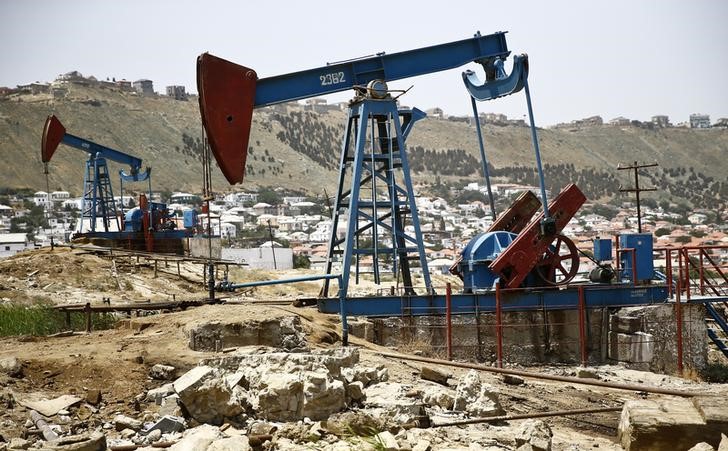By Barani Krishnan
Investing.com - The herd trade has seized oil as hedge funds pile into the market to try and gain from its upside momentum, even without a fresh driver for prices.
A day after rallying 5% on positive crude stockpiles data that was offset by a surprise rise in gasoline inventories, U.S. crude’s West Texas Intermediate benchmark was up again, this time without a new catalyst. Stocks on Wall Street fell as the Labor Department reported that another 2.5 million Americans filed for first-time unemployment benefits last week, bringing job losses from Covid-19 to just under 40 million.
WTI’s front-month, July, came within cents of hitting $35 a barrel, reaching a March high of $34.63. By 1:30 PM ET (17:30 GMT), it was up 19 cents, or 0.6%, at $33.68.
Brent, the London-traded global benchmark for oil, rose 16 cents, or 0.5%, at $35.91.
“Oil is higher once again as it ‘feels’ like there is money coming in from the long side that is longer term in nature,” said Scott Shelton, energy futures broker at ICAP (LON:NXGN) in Durham, N.C.
“I think CTAs are still in buying … and the WTI market is getting close to getting long. Overall, the ‘optics’ of oil look solid … (but) personally, I just can’t be bullish here as a rally driven by strong physical oil is only bullish when there isn’t 12-15 million barrels per day of capacity that can be added back to the market.”
WTI has gained nearly 250% from an April 28 bottom of $10.07 a barrel, as hedge funds and other buyers responded to the huge cuts in oil rigs and shut-ins of wells by drillers who saw up to a third of the demand for crude vanish overnight from the coronavirus pandemic.
WTI is still down 45% on the year. But analysts also caution that with the U.S. crude benchmark at near $35, drillers could already be putting some of the removed production back into play.
Two prominent shale producers — Diamondback Energy (NASDAQ:FANG) and Parsley Energy (NYSE:PE) — have already said that oil at around $30 per barrel was all they needed to consider easing up on output curtailments and start fracking new wells.
Diamondback initially pledged to pare its May output by 10% to 15% and send home most of its fracking crews for the whole quarter. The Midland, Texas-based company said it expects to end the year with more than 150 wells that were drilled but never fracked as U.S. producers avoid pumping oil into a vastly oversupplied market. Parsley Energy, meanwhile, has curtailed a quarter of its output and temporarily abandoned its five-rig, two-frack crew program.
Shut-in wells In the Permian Basin’s Midland region have started reopening, Mackie McCrea, chief commercial officer at pipeline giant Energy Transfer (NYSE:ET) told a conference last week.
About 8% of oil volumes that fed Energy Transfer’s pipe network in the Midland had initially been shut at the start of this May. As of last week, about a quarter of that was back, McCrea said.
Thursday’s rise in oil prices also came after data the previous day showing gasoline inventories gained unexpectedly by 2.8 million barrels last week, versus forecasts for a drop of 2.1 million barrels. Crude stockpiles, meanwhile, fell 5 million barrels against a forecast build of 1.2 million.
